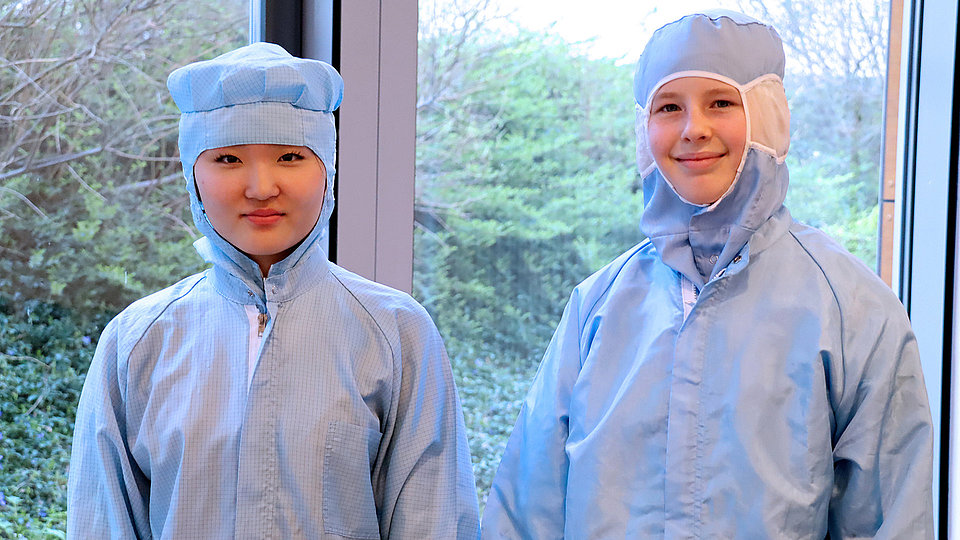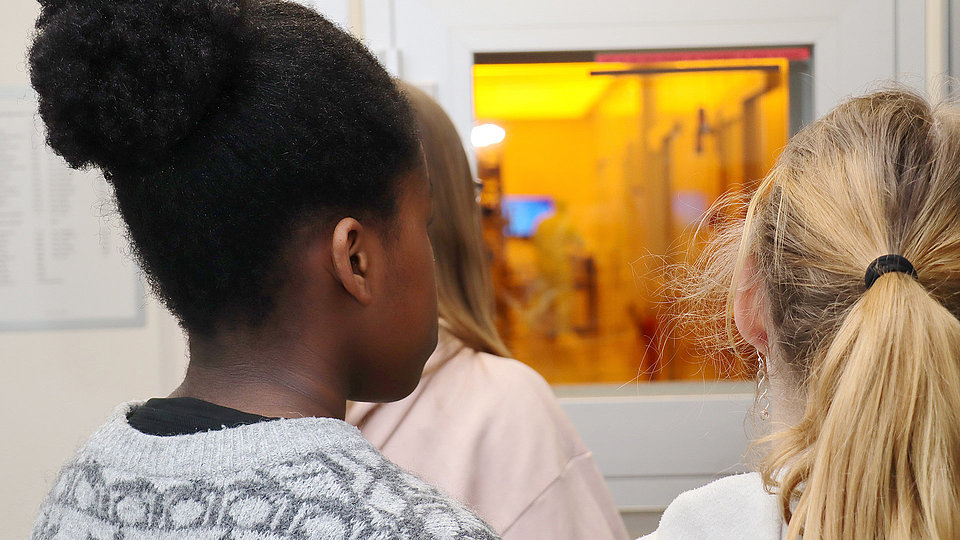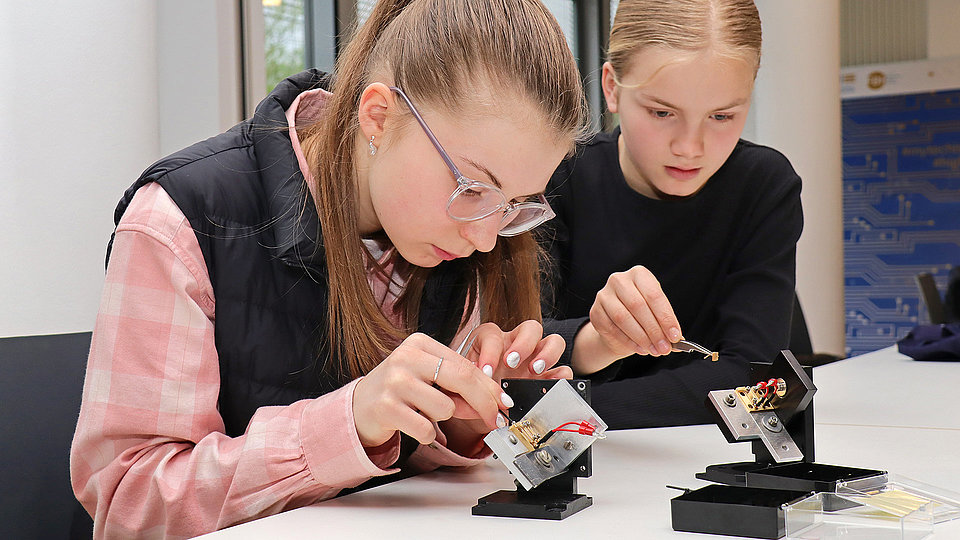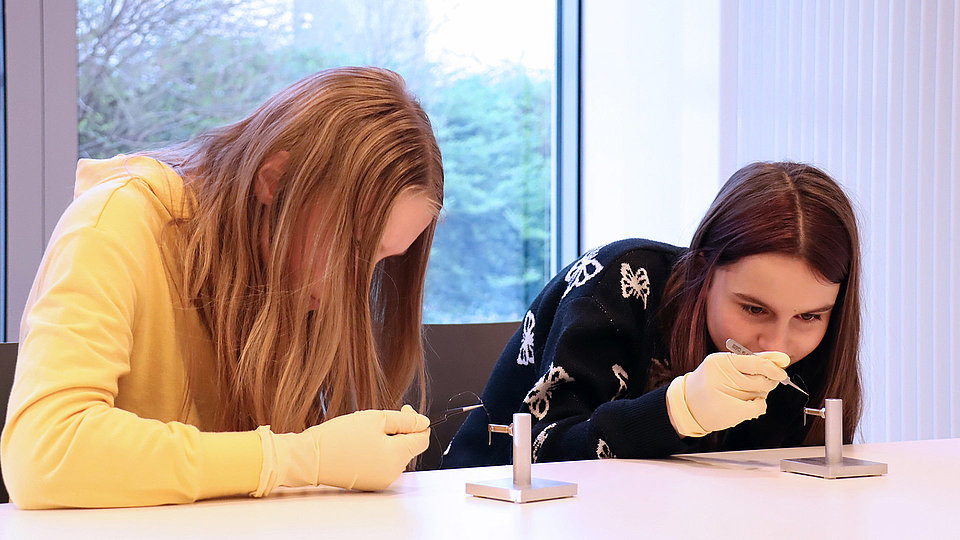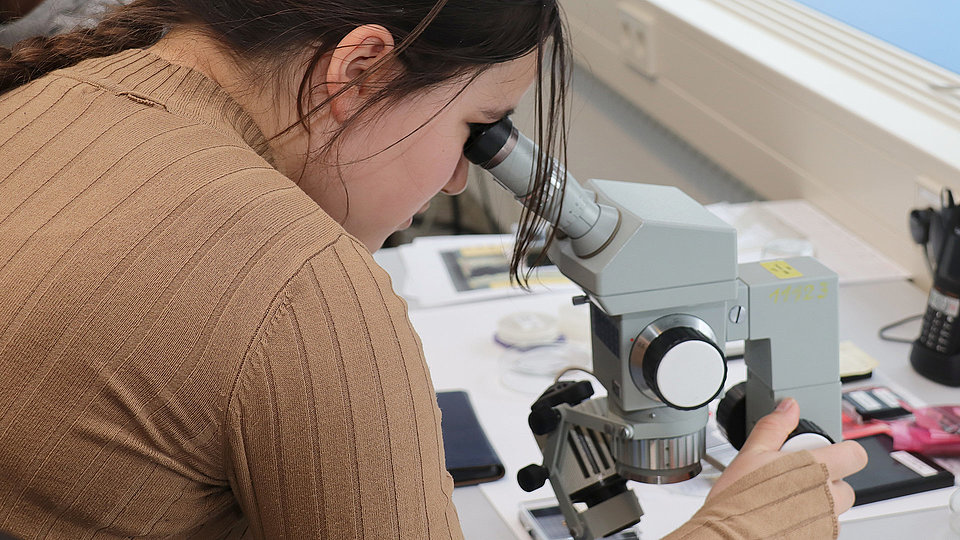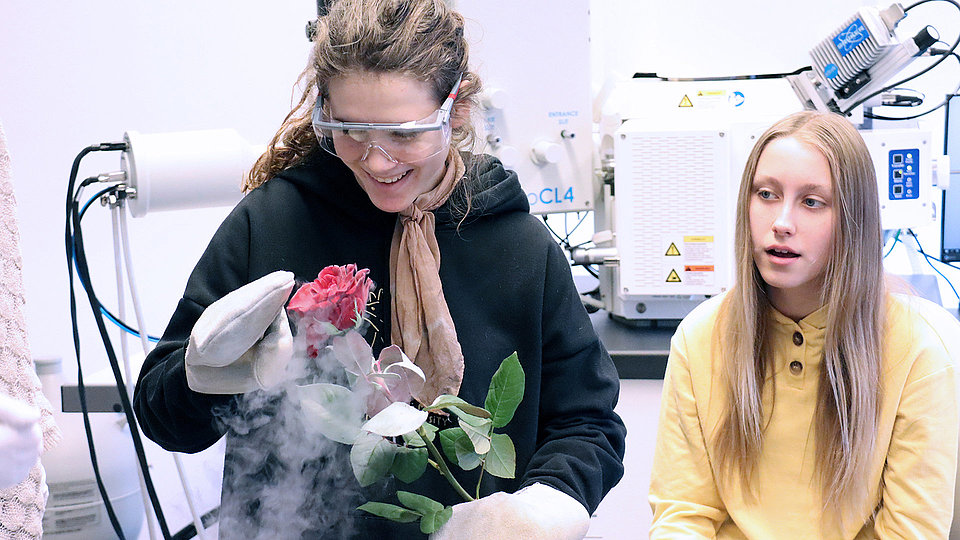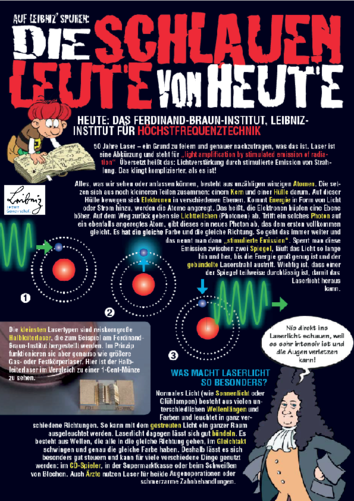Girls'Day
Since 2004, we have participated in Girls' Day every year and are pleased with the ongoing interest. Under the motto "A day as a microtechnologist - research with precision", schoolgirls in grades six to ten can take a look behind the scenes of research and development.
In a short opening lecture, we introduce the research areas of the Ferdinand-Braun-Institut. Afterwards, we divide the group to get to know some stations in the institute in smaller groups. In this way, the students gain insights into typical processes and steps in the manufacturing of semiconductor components and conduct experiments themselves. In addition to a tour of our institute, the schoolgirls carry out practical experiments themselves.
In wafer handling, the students learn how to handle the ultra-thin wafers. These wafers are the starting material for lasers the size of a grain of rice or tiny high-frequency components that we research and develop at FBH. A wide variety of material layers, often only a few atomic layers thick, are applied to the wafers and then structured by etching or metallization processes - until a semiconductor component is created: a laser, a high-frequency circuit or a transistor. The final look through the microscope shows how small the structures of the powerful chips really are.
Precision is required when the schoolgirls fit lasers into measuring holders or insert bonding wires into a special tool. These wires are as fine as a hair and supply our components with electricity.
-
How does a laser work? (in German)
In issue 419 (Nov. 2010), the Abrafaxe and the Ferdinand-Braun-Institut briefly explain how a laser works and what it is used for: (Copyright: Mosaik-Comic, Steinchen für Steinchen Verlag)
